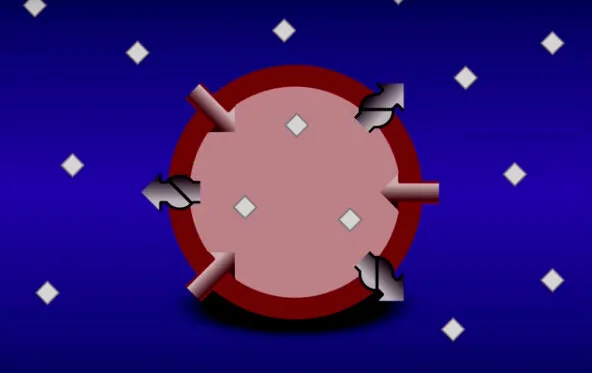
Procedure
Targeted Osmotic Lysis (TOL) is a revolutionary treatment for advanced cancer, combining a generic drug (a cardiac glycoside) with a proprietary pulsed electric field device.
Simple TOL animation
TOL operates at the cellular level on cancers (most cancers, mesothelioma) that overexpress sodium channels and pumps. We can block sodium pumps and sodium outflow using a cardiac glycoside. Then we electrically stimulate to open Voltage Gated Sodium Channels (VGSC), letting sodium into the cell. Because advanced cancer cells overexpress sodium channels by 10-50 times compared to normal tissue, normal cells take in less sodium, less water, and their compliant membranes let them swell but not rupture; when the drug wears off they return to normal. Cancer cells take in much more sodium, much more water, and explode.

About the drug
Cardiac glycosides are sodium pump blockers.
There are several other promising cardiac glycosides to use in TOL that might be more selective for different sodium pumps and may be used at a later time, but only digoxin is currently FDA-approved for human use. None is approved for companion animals.
Digoxin is used extra-label in animal health.
Obtaining drug approval is a much more expensive and longer process than the process for device approval.
Digoxin is a long-used cardiac glycoside. Its properties are well-known and it is safe when used correctly.
Digoxin has a narrow therapeutic range and its safety profile is considered acceptable when used within that therapeutic range.
For TOL treatment, digoxin is used in the same dosage as if it were being prescribed for cardiac treatment.
Safety studies at LSU School of Veterinary Medicine demonstrated that there were no adverse effects of the TOL treatment in dogs or cats.
About the electrical device
Coaxial Ring electric field device:
Prototype device at left is 8’ long with a 35” diameter. ~600 lbs., sized for human patients.
Prototype device at right is 4’ long with an 18” diameter, shown here treating mice.
Both devices use wall power, generate no heat, require minimal shielding and no floor supports.
Commercial veterinary device will be between the two sizes.
Device ensures a uniform electric field throughout the patient area and a pulse pattern optimized to open sodium channels.
Designed and manufactured by The Phantom Laboratory in Greenwich, NY.

Process for patients
The exact process for human patients is still yet to be determined, but this is how TOL is currently administered for pet dogs and cats with cancer:
1 - Diagnose, image & dose
Take and fix biopsy, assay for overexpression of sodium channels. If candidate is suitable, image tumor and begin dosing drug orally 6 days pre-treatment.
2 - Treat in the device
Place pet in carrier in device, no sedation or restraints needed. Treat for 2 hours on the first day and 2 hours on the second day, with a break halfway through each session.
3 - Gather data/treat again
Take post-treatment biopsy and assay, image and compare. Get information from owner about pet’s behavior and plan additional courses of treatment two to three weeks apart.
None of our pet cancer patients has exhibited any pain or discomfort during their TOL treatments.
All have seen significant tumor shrinkage.

How did we get here? Check out our journey so far.



